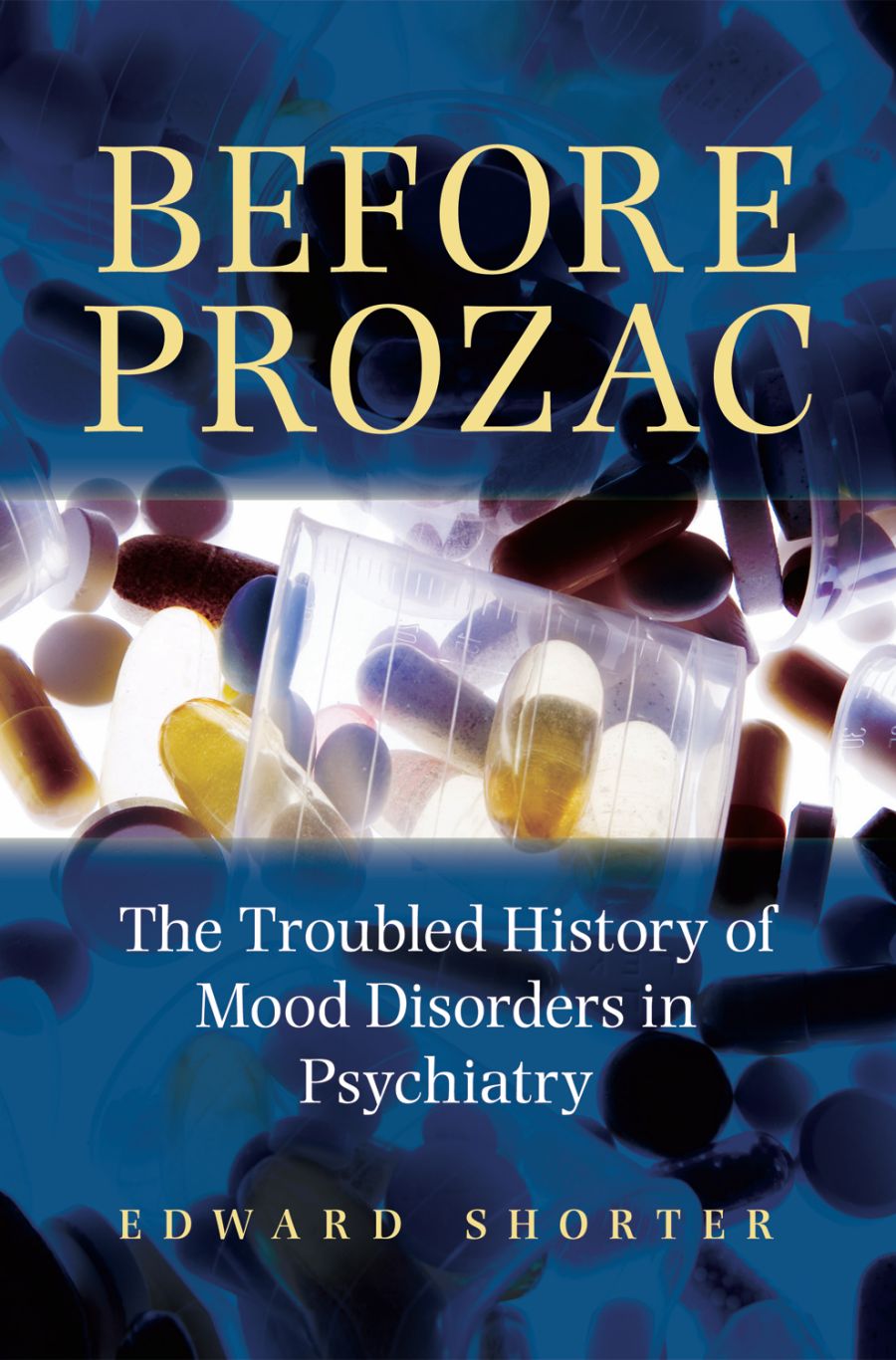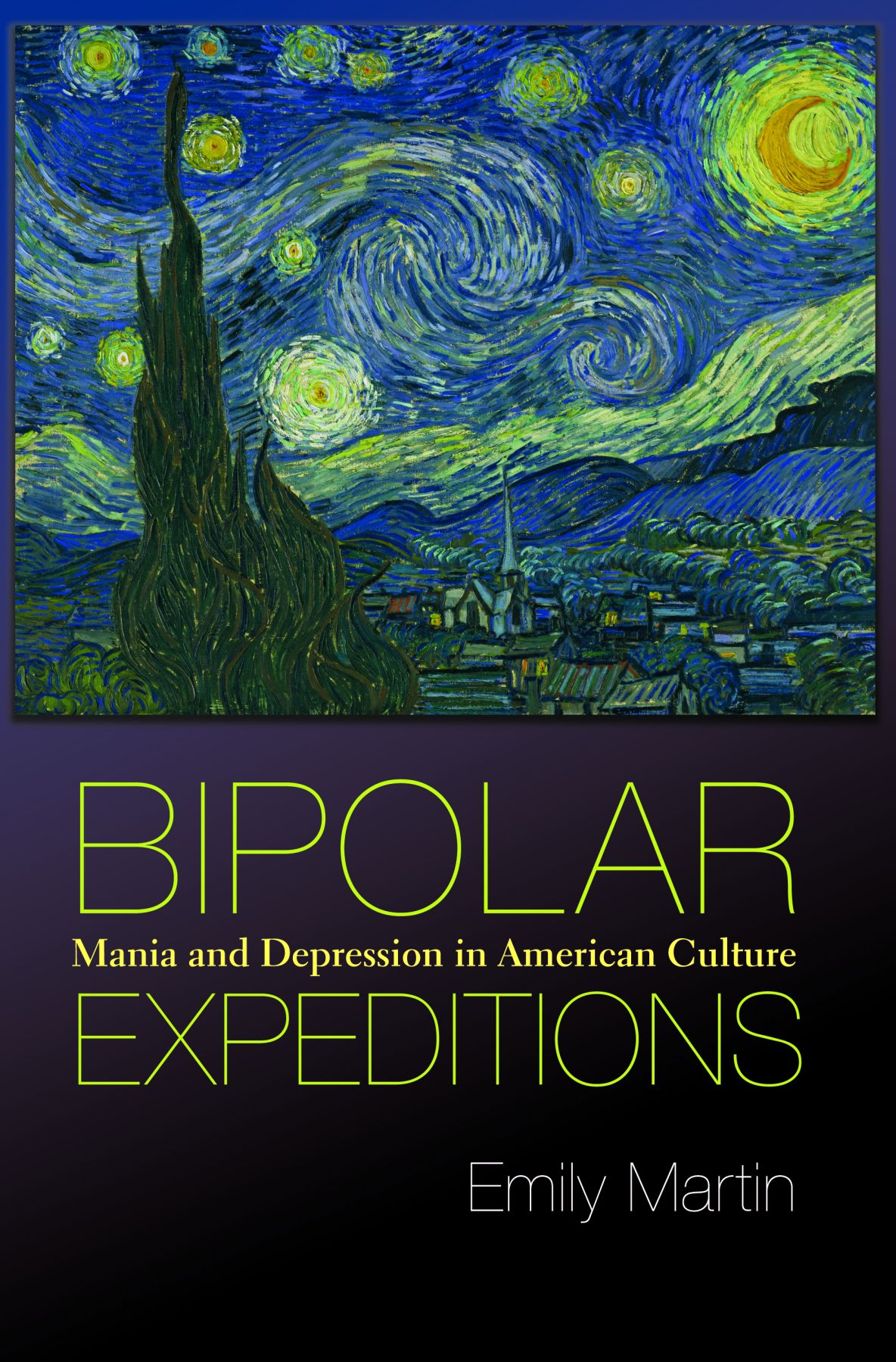
Edward Shorter is the Hannah Chair in History of Medicine and Professor of Psychiatry at the University of Toronto. His new book, Before Prozac: The Troubled History of Mood Disorders in Psychiatry is an unsettling look at how greed, lax regulations, and academic infighting have set the field back fifty years. In the excerpt below, Shorter looks at how the psychiatrists in “the trenches” are making drugs work for their patients.
On a psychopharmacology listserv, one participant, himself a psychiatrist, posted a message seeking help for his ailing wife. He thought, with a touch of professional rivalry, that her current psychiatrist was not serving her well, having prescribed two SSRIs.
“Does this make sense to anyone?” he asked the list. “Is there anything in the literature, or from people’s experience, that supports the co-administration of two SSRIs?”
One member of the list responded,
Who really knows what causes depression? And for that matter who really knows what  neurotransmitters or pathways are involved? New agents in research do not even touch the serotonergic pathways. I take the path of “whatever works.” Evidence-based medicine will never look at combinations and the like [which members of the list prescribe all the time] as it would not benefit the industry’s bottom line. As clinicians we have to tinker with the tools we have and see what happens. Or have I missed something over these years? Our evidence usually is sitting in front of us and is known as the patient.
neurotransmitters or pathways are involved? New agents in research do not even touch the serotonergic pathways. I take the path of “whatever works.” Evidence-based medicine will never look at combinations and the like [which members of the list prescribe all the time] as it would not benefit the industry’s bottom line. As clinicians we have to tinker with the tools we have and see what happens. Or have I missed something over these years? Our evidence usually is sitting in front of us and is known as the patient.
These are words of wisdom: The evidence is in front of us and is how the patients respond to treatment.
We can find out all kinds of things by looking at the patients. An example: trazodone was a mildly effective antidepressant developed in Italy in the 1960s and marketed in the United States by Mead Johnson in 1982 as Desyrel; it had indifferent success. Today, trazodone is experiencing a big comeback, not as an antidepressant but as a hypnotic. In the world of everyday psychiatry, trazodone is loved for its gentle qualities and its affordable price, in contrast to the patent-protected sleep aids that cost the moon. Yet you will never see an ad in a medical journal for trazodone, nor will drug reps ever stop by your office with free samples in the hopes that your patients might start on it and stay with it.
Once you get away from the glossy ads in the journals, in psychiatry today it’s the Wild West out there. Clinicians are experimenting constantly with different combinations of treatments, many of them from psychiatry’s past, that promise new therapeutic effectiveness. They communicate their day-to-day experiences almost furtively on listservs such as this one, aware that they are pioneering the future of therapeutics in a way that industry will not countenance, because most of the older drugs are not patent protected; government agencies will not support this kind of clinical experimentation because the whole enterprise seems much too empirical for “science” and does not involve research in molecular genetics.
Academic psychiatry offers the image of a prescribing desert with just two tall cactuses, the SSRIs and the atypical antipsychotics. But in the real world it’s a different story. Among community psychiatrists with a good knowledge of psychopharm, there’s a thoughtful pioneering of combos of the most diverse and imaginative variety. This is not polypharmacy, the harmful proliferations of medications. It’s combopharmacy of the kind that the Food and Drug administration rejected…the realization that the brain offers multiple pathways to the remediation of illness.
So there’s a big disconnect between what is happening the trenches and in the world of official medicine. The young community psychiatrists combining remedies from the shelf like kitchen spices rarely publish, although communication among themselves in listservs is lively. Academica with honoraria from drug companies dominate the meetings with papers on patent-protected compounds for FDA-approved indications. But this kind of disconnect is not good for a field. It recalls the days when the bewigged courtiers of Louis XVI confronted the angry citizens of Paris over the barricades. Perhaps the conflict between the arid desert of academic psychiatry and the vitality of community practice will have a similar outcome.


Today we are excited to bring you Emily Martin a professor of anthropology at New York University. In her most recent book, Bipolar Expeditions: Mania and Depression in American Culture, (published by Princeton University Press), Martin guides us into the fascinating and sometimes disturbing worlds of mental-health support groups, mood charts, psychiatric rounds, the pharmaceutical industry, and psychotropic drugs. Charting how these worlds intersect with the wider popular culture, she reveals how people living with bipolar disorder are often denied the status of being fully human, even while contemporary America exhibits a powerful affinity for manic behavior. In the post below Martin look at how this is affecting American’s perception of mood disorders. Thanks to our friends at PUP for letting us know about this fascinating book!
What lies behind the recent explosion in the diagnosis of bipolar disorder among American children? There is much to wonder about, as we know from Time magazine’s 2002 cover, “Young and Bipolar;” and from a recent 60 Minutes segment, “What killed Rebecca Riley?” Four year old Rebecca is said to have died from an overdose of psychiatric medications given to her for her bipolar disorder. The New York Times had already reported the month before that the number of American children and adolescents treated for bipolar disorder increased 40-fold from 1994 to 2003. Not long afterward, under the headline “Your Child’s Disorder May be Yours, Too,” The Times reported that parents are struggling with whether to acknowledge aspects of their own behavior that are consistent with mood disorders in order to help their children feel they have “fellow travelers.” Behind these stories lie powerful cultural changes in how Americans regard their moods.
 Bipolar disorder is becoming not only a disability but also an asset. Because of the creativity of their manic states, larger than life figures like Robin Williams and Ted Turner are frequently described as “bipolar.” Depression, at the other end of the mood spectrum carries a different load of associations. If mania comes to signal success in the competitive, sped-up global economy, depression signals the opposite: the failure to be productive. What interests me as an anthropologist is that cultural values very specific to our society are carried along with the diagnosis of a mood disorder.
Bipolar disorder is becoming not only a disability but also an asset. Because of the creativity of their manic states, larger than life figures like Robin Williams and Ted Turner are frequently described as “bipolar.” Depression, at the other end of the mood spectrum carries a different load of associations. If mania comes to signal success in the competitive, sped-up global economy, depression signals the opposite: the failure to be productive. What interests me as an anthropologist is that cultural values very specific to our society are carried along with the diagnosis of a mood disorder.
For bipolar disorder, the our cultural fantasy is that as depression can be made to wither away altogether, the high energy of the manic phase can be tamed or optimized, so that individuals can succeed and economies grow. The growing numbers of psychopharmaceutical drugs are what allow contemporary doctors to give a patient a diagnosis of mood disorder and treat it, rather than (as in earlier historical periods) lay the patient’s problems at the feet of his or her temperament or character. At a meeting of the American Psychiatric Association, I met a young doctor who practiced in a well-known hospital near Hollywood. When he heard about my research, he became quite interested and offered me this experience.
Where I work, we get a lot of Hollywood comedians coming in. They are manic depressives. There are two important things about this: first, they do not want their condition publicized, and second, their managers always get involved in the details of their treatment. The managers want the mania treated just so. They do not want it floridly out of control, but they also absolutely do not want it damped down too much.
He felt he was being called upon to optimize his patients’ moods (for the theatrical profession and for the particular kinds of creativity it requires) through proper management of their drugs. Listening as an anthropologist, I began to feel uneasy about the prospect of extending the optimization of psychotropic drugs to suit other kinds of employment and people in other age groups. What would happen if optimizing states of mind were extended, as the DOD hopes, to soldiers on combat duty? What are the implications of extending the use of powerful psychotropic drugs to treat children whose behavior causes problems at home or school? A number of factors have been blamed for the rising statistics of bipolar disorder in children: improved treatments or more knowledgeable diagnosis by doctors. But the need for treatment (real as the need may be and helpful as the treatment may be in some cases) cannot be separated from values in our cultural environment that associate some moods with success and others with failure. A broader conversation about the cultural environment in which rates of bipolar disorder are rising would enrich our understanding of what it means to be bipolar – for children and adults alike –today.
ShareThis
I finished Karen Hesse’s Newbery-winning poetic novel, Out of the Dust.
There have been very few books that made me cry.
I cried at the end of The Grapes of Wrath.
I cried at the end of Missing May.
I lost track of how many times I cried while reading Out of the Dust.
Karen Hesse is my new hero.
 neurotransmitters or pathways are involved? New agents in research do not even touch the serotonergic pathways. I take the path of “whatever works.” Evidence-based medicine will never look at combinations and the like [which members of the list prescribe all the time] as it would not benefit the industry’s bottom line. As clinicians we have to tinker with the tools we have and see what happens. Or have I missed something over these years? Our evidence usually is sitting in front of us and is known as the patient.
neurotransmitters or pathways are involved? New agents in research do not even touch the serotonergic pathways. I take the path of “whatever works.” Evidence-based medicine will never look at combinations and the like [which members of the list prescribe all the time] as it would not benefit the industry’s bottom line. As clinicians we have to tinker with the tools we have and see what happens. Or have I missed something over these years? Our evidence usually is sitting in front of us and is known as the patient.





I really enjoyed this book too. The format was different from anything else I’ve read, and it was beautiful and thought-provoking.